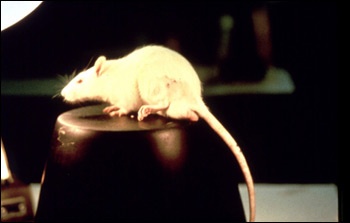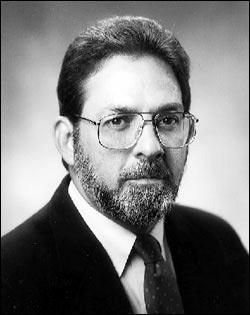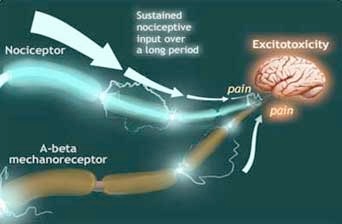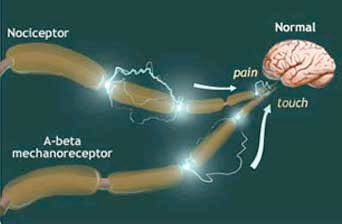Mitchell Max's clinical trials with diabetic neuropathy and postherpetic neuralgia patients addressed the major enigma of the pain field: the mechanism involved in chronic neuropathic pain. The classic neuropathic pain disorders are the agonizing conditions known as causalgia -- "the most terrible of all tortures", in the words of S. Weir Mitchell , the Civil War physician who first described it -- and reflex sympathetic dystrophy (RSD) (more recently termed chronic regional pain syndrome). Usually occurring after nerve injury to a hand, foot, arm or leg, causalgia and RSD may be triggered by any minor injury, by a surgical procedure, or a serious trauma. They are characterized by pain which persists after the original injury has healed; by hyperalgesia , intensified perception of a mild painful stimulus, and allodynia , perception of pain in response to the lightest of touches; even by spontaneous pain, where the patient reports pain although no stimulus is present! The pain often proves resistant to all treatment, including medication, counter- stimulation, anesthetic blocks, psychotherapy, and even neurosurgery. The unhappy victim of such a syndrome becomes withdrawn and depressed, resists all physical contact, and guards the affected limb constantly. Researchers had tried to reproduce the symptoms of neuropathic pain in animals, but without success. At NIDR, they injected the hind paws of rats with solutions causing brief inflammation, such as Freund's adjuvant or capsaicin , then tested them for hyperalgesia and allodynia by placing them on warmed surfaces and timing the "withdrawal latency" - the time before the rat lifted the affected paw. An improved method, developed by Kenneth Hargreaves of the NAB, was to place the rat in a glass box and direct a pinpoint radiant heat stimulus at the inflamed paw. An attached photoelectric cell measured the withdrawal latency in fractions of seconds. The rats showed increased withdrawal times, moving the affected paws more quickly when exposed to warm and mild heat stimuli. But the symptoms were short lived and there was no evidence of spontaneous pain. In 1988, Gary Bennett, a physiological psychologist working in the NAB, and Yi -Kuan Xie, a visiting scientist from Beijing, decided to try tying loose ligatures around the sciatic nerve of the rat's left hind leg, to observe any changes in the firing rates of the affected nerves. (These changes would reverse as soon as the sutures were absorbed.) They left the rat overnight and came back the next day to find it guarding the affected paw in a very unusual way, refusing to let it touch the ground. This was the first observation of the chronic constriction injury model: the rat with symptoms similar to causalgia or RSD. |
|




